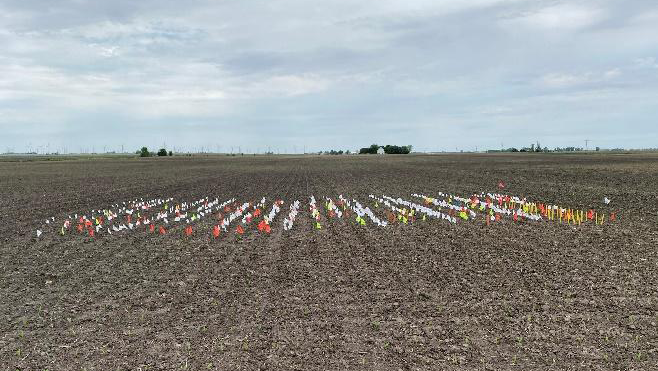IF YOUR CORN STANDS AREN’T UNIFORM, YOU’RE LIKELY LEAVING YIELD ON THE TABLE
Farmers have countless options when it comes to products and techniques promising yield bumps, but AgriGold Agronomist Joe Stephan says farmers’ first priority should be uniform stands. “Getting a uniform stand is the closest thing to a silver bullet we have,” he says.

Stephan conducted emergence trials during 2022 with a group of farmers who were focused on achieving higher yields. The study results prompted those farmers to rethink yield potential and some of their methods.
POOR PERFORMANCE CAN OFTEN BE TRACED BACK TO POOR EMERGENCE
“An uneven stand is the biggest yield-limiting factor in my area of the eastern Corn Belt where tight soils mean we often fight wet, cold conditions that delay emergence,” Stephan explains. “It can take several days to reach desired populations, and in some years, partial stands force replant decisions.”
Disappointing results can often be traced back to the day a corn crop was planted or the weather that came right after, according to Stephan, who defines an even stand as all plants emerging within a 24-hour period. “If you have that, the sky is the limit on yield.”
Stephan encouraged trial participants to grade themselves on whether they got the planter and seedbed conditions needed for a good stand. “My goal isn’t to tell farmers they’re doing a great or a poor job,” he says. “My goal is they grade themselves on how they’re doing with their investments and help them find solutions to reduce those yield-limiting factors.”
EMERGENCE IMPACTS KERNEL COUNTS AND KERNEL WEIGHT
During the wet 2022 growing season, farmers in Stephan’s area planted much of the corn crop during the second and third week of May. Consequently, farmers were scrambling to get seed in the ground and, in some cases, were unable to wait for ideal conditions. The corn crop generally emerged quickly, but even among those first to emerge, Stephan reports variability in ear size and consistency from the less-than-ideal soil conditions as well as fodder in the root zone with some of the corn-on-corn acres.
For one farmer who planted in wet conditions and had uneven stands, the variance between plants that emerged first versus those that emerged three days later was particularly striking. The field still performed well with an average yield topping 250 bushels an acre, so his perception was wet conditions had a limited impact on yield. But Stephan’s emergence trials signaled otherwise.
Stephan shelled and weighed the dried kernels and found an actual yield of 392.7 bushels per acre for the plants first out of the ground. “In this case, the first day to emerge took less than 58,000 kernels to make a bushel,” he details. On the other hand, Day 4 emergers yielded 198.1 bushels per acre and took over 96,000 kernels to make a bushel. Stephan says the dramatic difference shows “it’s not only kernel count that’s better when crops emerge uniformly, but also the kernel weight.”

The farmer was blown away by the dramatic difference in kernel size and yield between the first-emerging corn plant and the late emerger that indicated yield was left on the table. While waiting for better conditions may not have been in the cards, Stephan says the data shifted his perception about what the field should yield and drove home the significance of uniform emergence.
TIPS FOR ACHIEVING EVEN STANDS
To achieve even stands, Stephan says, “It’s important to realize your capabilities and try to do the best you can.” That includes recognizing the strengths and weaknesses of your planter and tillage equipment and investing to ensure they are operating properly.
“Pay attention to genetic families and hybrids with strong emergence ratings and have a plan in place for placing those hybrids on the right acre,” Stephan advises, adding an AgriGold agronomist can be a helpful resource. He plans on diving deeper this season and breaking kernels per bushel down by their Field GX™ families.
“Monitor weather forecasts and field conditions and understand the capability of your soils,” he continues. “If you must plant in less-than-ideal conditions, recognize and adjust for those penalties.”
For more tips for getting your corn crop off to a vigorous, uniform start, reach out to your local AgriGold agronomist.



